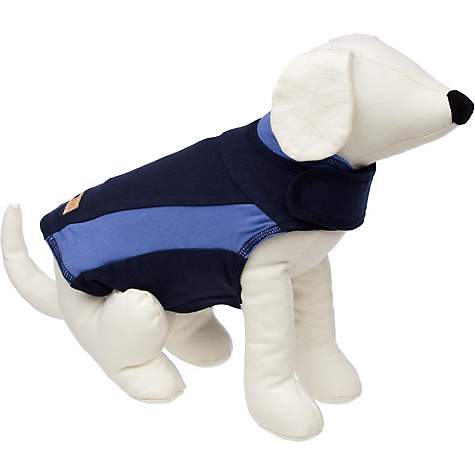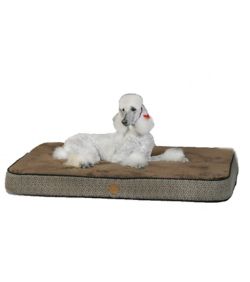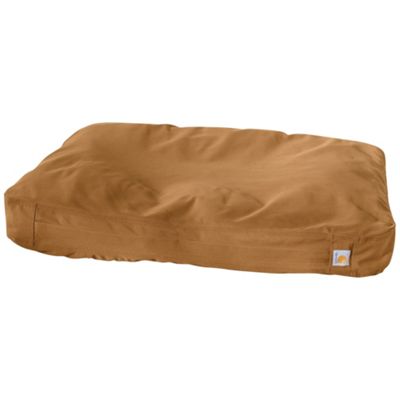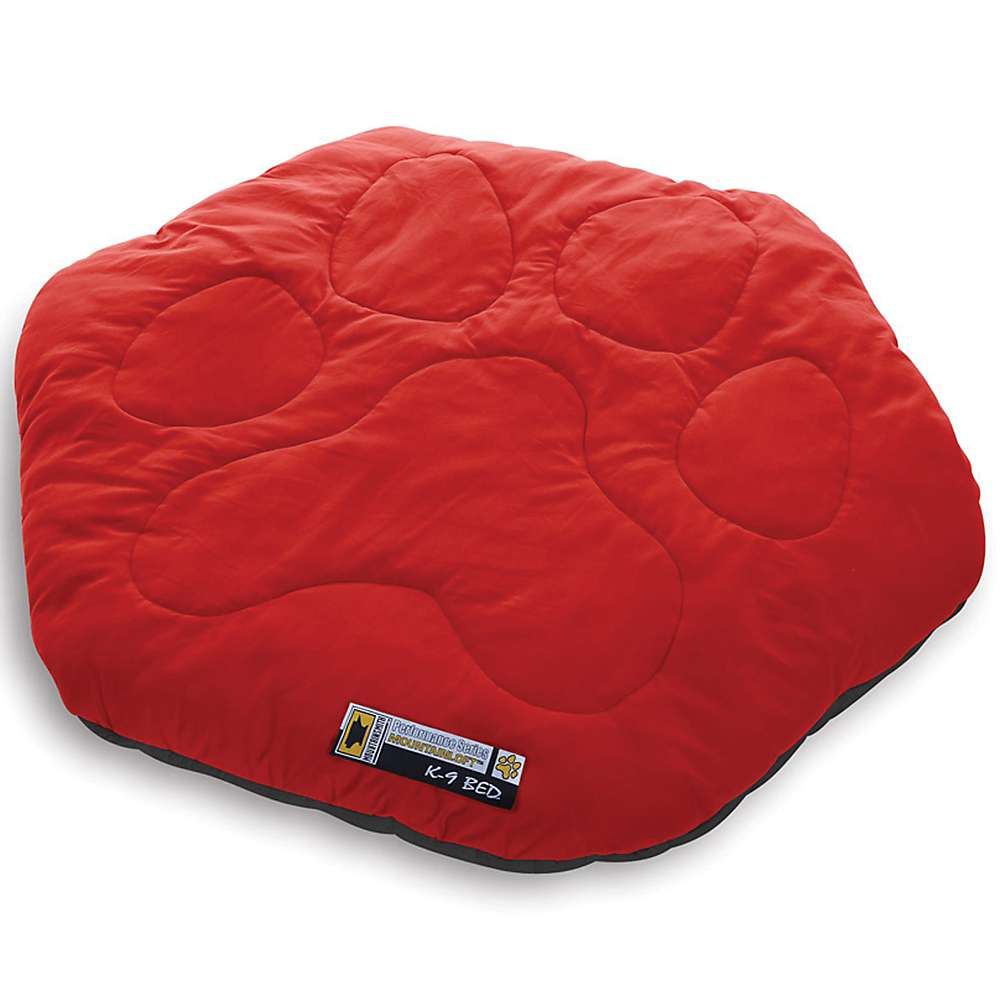Sundowning....a cause of bloat?
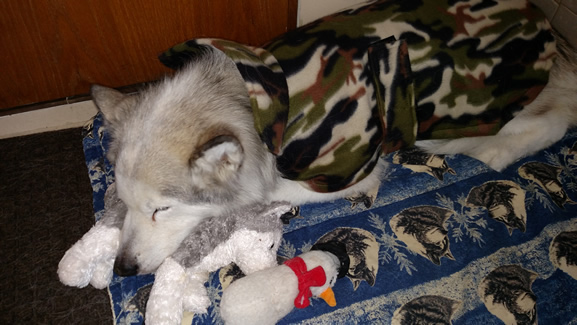 This all started with Mulan. At the age of 13 (which is ancient for Malamutes) she bloated....and a week later bloated again. Both times it was the middle of the night. She pulled through both times but how do we prevent this from happening again? Dan's observation proved helpful...he noted she started 'huffing' and getting very nervous around 5-6pm in the evenings....gradually it would escalate, but if she didn't bloat, all symptoms would be gone in the morning. What was going on???? We had to find answers.
This all started with Mulan. At the age of 13 (which is ancient for Malamutes) she bloated....and a week later bloated again. Both times it was the middle of the night. She pulled through both times but how do we prevent this from happening again? Dan's observation proved helpful...he noted she started 'huffing' and getting very nervous around 5-6pm in the evenings....gradually it would escalate, but if she didn't bloat, all symptoms would be gone in the morning. What was going on???? We had to find answers.
With a little sleuthing, we discovered that with better nutrition and more available/advanced veterinary care, our pets are living longer and healthier than ever. Coupled with the fact that many households regard pets as part of the family, pets are enjoying healthy, meaningful lives interacting with the human household so dogs live longer and are more likely to acquire old age diseases. Mulan had one of these diseases, but it wasn't like a "regular" disease - it was related completely to old age.
Some changes are written off as 'normal for old age' when they may be signs of something known as Canine Cognitive Dysfunction. This is a series of geriatric behavioral problems, not explained by other medical conditions. Basically, doggy Alzheimers...The term "sundowning" refers to a state of confusion and anxiety occurring in the late afternoon and spanning into the night. Sundowning can cause a variety of behaviors, such as confusion, anxiety, aggression or ignoring directions. Sundowning can also lead to pacing or wandering, panting and stress but typically goes away in the morning and early afternoon.. Mulan would become obsecessed with looking through doors (like something was going to get her) or avoiding parts of the yard, or wanting to be near us to feel safe - then 20 minutes later needing to be alone in her crate. What are the symptoms? They vary...your pet may have all or just a couple....
- General confusion - your pet doesn't greet or seem to recognize you as before, your pet gets 'lost' in the yard or house
- Increased, excessive, or unusual vocalizations (whining, crying, barking included).
- Pacing and restlessness.
- "Spacing out" and staring at walls, or at nothing.
- Less interested in interacting with family (or with other pets), or yelling at other pets she previously had no problem with.
- More easily triggered irritability or aggression. Not wanting you to touch certain parts of their body.
- Decreased interest in activity - including playing, going for walks, or socializing.
- Confusion or disorientation (for example, waiting at the wrong side of the door to go outside or trying to find where her bed USED to be).
- Changes in the sleep-wake cycle - sleeping more during the day, awake more at night.
- Inappropriate vocalization - barking or crying in the middle of the night.
- Restless pacing behavior, sometimes with panting at night. Get up, lie down, get up, lie down every few minutes with the inability to settle down and sleep.
- Accidents in the house
- Becoming more 'needy' or clingy, and needing reassurance.
- Increase in general anxiety. Dogs may constantly pant. This may or may not be accompanied by pacing.
- Seeing things that aren't there, confused or fearful of shadows (Mula would at times seemed afraid to leave the shady part of the yard and go into the sunny part).
How to Help a Dog With Sundowning Syndrome
Here are some things that can help a dog who is suffering some sundowners syndrome. Every dog is different and you may need to try multiple things - or a combination of things - to find the best way to help keep your dog become relaxed and calmer. And it's critical that they do become less apprehensive - stress is a major cause of bloat.
- Eliminate Medical or Pain Issues
- Pain is often worse at night. Dogs, particularly older dogs, might be experiencing pain from arthritis or in Mula's case, she was stressed by a large dinner and her stomach gurgling. Sometimes treating underlying medical conditions can help to decrease or minimize sundowning behavior.
- A regular routine is very important to alleviate stress. Most dogs feel more secure with a routine. Feed at the same time, establish a regular time for walks, and go to bed at the same time every night. Anxious dogs can find this comforting and it will allow them to relax more readily.
- Use Light - flooding rooms with light can help to eliminate any scary shadows or indistinct objects that might be frightening to pets. Sometimes just a nightlight can help (that's what we did) so that when she wakes, she can see where she is..
- As natural daylight fades, start turning on lights throughout the house. Keep the lights on until bedtime, when lights can be turned off. If your dog noticeably gets more anxious or agitated when the lights are off, you may want to try putting him in his own room with the lights left on all night.
- Some people use night lights to try and help dogs who seem anxious when darkness falls. This seems to help some dogs, but if your dog still seems anxious, try unplugging the night light so that it's totally dark. Sometimes even the glow from the tiny night light is enough to cause weird shadows and scare the dog.
- Dogs who are losing their hearing may become more sound-sensitive. Sounds that they can't readily identify may be scary to them. Playing background music can help to lessen anxiety in some dogs. Classical music is a good choice, or you can purchase various pre-loaded calming music for dogs.
- Calmly pet your dog while you watch TV, no wild games, something calming without loud noises. (Movies that had crazy volume increases or crashes and bangs would upset Mulan - even us yelling across the room at another pet would spook her terribly).
- Just before the sundowning behavior begins in the evenings, try a pleasant and soothing activity to help relax your dog.
- If the pacing and restlessness is extreme, or none of the other methods help, it may be time to consider medication. Talk to your veterinarian about anti-anxiety meds or Anipryl, a drug that's used to treat dementia in dogs. Anipryl doesn't work for all dogs and for those that it helps, it appears to have a limited time span in which it helps. Same is true of Trazodone which is a sleep aid. Our vet prescribed Trazodone, and it helped a lot. Melatonin is also helpful for some pets. It's a naturally-occuring hormone that can help to reduce anxiety in dogs as well as promote a more natural sleep-wake cycle. In general, dogs who are less than 25 lbs can get 3 mg every evening, while larger dogs can take 6 mg. Give the pill one hour before bedtime. Make sure to only use pure melatonin, not one that's mixed with other substances (like xylitol, which is toxic to dogs). It is probably best to buy melatonin that has been specifically made for dogs.
- Always be aware that if you are giving your dog supplements or like in our case, a prescription drug, it may interact with other medications. For example Trazodone can NOT be taken with Rimadyl so discuss this with your vet.
- Use an Anti-Anxiety Wrap such as the ThunderShirt. The Thundershirt uses gentle, constant pressure to calm anxious dogs. It has helped many dogs tremendously (it was originally for dogs afraid of thunderstorms). Put it on before your dog begins stressing. Dogs can comfortably sleep while wearing it. Even a fleecy comfortable dog coat can help some.
- Some dogs respond well to extra exercise as means of alleviating some anxiety and helps them feel tired enough to sleep. Take a morning or afternoon walk or engage in some play time before the clock strikes 4:00pm or whenever your dog begins to sundown..
- Dogs may find their crates comforting when they are feeling anxious. Make sure the crate is lined with comfortable bedding, there is water available, and the crate is big enough for your dog to fully stand-up, turn around, and comfortably lie down. The opposite is true if your dog gets anxious in a crate.
- If your dog sleeps in the room with you, you can try closing the door. Mula would sit on the bed and stare out the door like she was terrified of something out there even though she snuggled in between us.
- Dealing with sundowner syndome in dogs can be frustrating (especially when you're exhausted from lack of sleep!) but remember, despite the sundowning, your dog is still the same dog you've always loved. Sometimes it can feel like you have two different dogs...one is his old self, the other with odd behaviors and stressed. Be patient, be gentle, and understand that he isn't behaving this way on purpose. It can take time and some help from your veterinarian to figure out what method, or combination of methods, works best to help minimize the symptoms and allow your dog - and you! - to get some rest.
- Infections and other diseases can increase symptoms. If you suspect something like a UTI get it treated immediately.
- Light can help...a walk in late morning or early afternoon can help symptoms by resetting the internal clock.
During the later stages of dementia most dogs will become increasingly frail due to the progression of the illness. Knowing what to expect can help everyone to prepare.
The later stages of dementia can be a distressing time for pet owners. Each pet experiences the illness in their own individual way.
- Memory loss is likely to be very severe in the later stages of dementia. Mula lost track of time and would "forget" that she had one of her snacks and fully expected to get another one. This can lead to upset tummy so if this begins to happen often, humor her and give her two SMALL snacks instead. Refusing to give her the 2nd one can cause more stress than a 2nd one.
- She would also have time issues...if she thought a snack was forthcoming (near the time) and we tried to get her to go out and potty she would just spin around and do nothing. The answer seemed to be give her the snack first and then let her out.
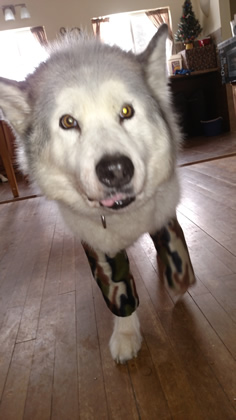 Weight loss is common and senior dogs either do not want to eat, or just don't metabolize what they do eat well. Mula was getting 5 meals a day and losing weight rapidly - possibly due to her nervousness and aggitation at night. It didn't help that actual dog food seemed to exacerbate her stomach growling which made her more nervous. So we ended up feeding her boiled meats and vegetables - in other words a "raw" (but cooked) diet.
Weight loss is common and senior dogs either do not want to eat, or just don't metabolize what they do eat well. Mula was getting 5 meals a day and losing weight rapidly - possibly due to her nervousness and aggitation at night. It didn't help that actual dog food seemed to exacerbate her stomach growling which made her more nervous. So we ended up feeding her boiled meats and vegetables - in other words a "raw" (but cooked) diet.- Security clothing. After the two bloats I made her a pair of leggings to cover the bare spots on her legs (from the IVs)...she loved wearing them (it was winter). We thought it was just because her legs were cold. We later realized they were 'security'. A dog coat, or thundershirt did the same thing. While keeping her warm helped, it was the security she really benefited from.
- Mobility becomes difficult after awhile so your dog may begin to move VERY slowly so she doesn't fall. What makes it worse is winter, and having to navigate on ice or deep snow. So be patient and watch to be there if your sundowner falls. She may not be able to get up easily. And expect it to take a lot longer for potty trips.
- If your dog was reliable about staying around the house without a fence that may no longer possible. Disorientation as to time and place, such as forgetting where he lives, getting lost, and the passage of time is a common experience for pets with dementia.
- Whereas people lose their perception of time, Mula seemed to be obscessed by it. She measured her days by her snacks...but the problem became that she would keep track of the time, but forget the fact that she'd already done something so we had to start over.
- Time also became an increasingly difficult problem when we'd leave the house. At first she would just sleep, but as her sundowning/altzheimers progressed, she would rest for awhile - then get up and start howling for us. (I would watch her remotely on the webcam while we were away). She seemed to be OK if we returned at the expected time (lunch snack) but would become increasingly upset if we were delayed or late.
- Eating and weight loss presented probably the most time consuming problem. People with dementia lose weight in the later stages of the illness, and weight loss can affect the immune system, making it harder for the person to fight infections. We were feeding 5 meals a day (normally she'd get 2) and she was still losing weight. If a meal was too large her tummy would rumble causing stress, especially toward evening, so we had to keep evening meals small. That made it difficult to keep weight on her. It was a balancing act between enough food and food stressing her out (and she LOVED to eat - she was NOT a picky eater).
- She also would forget to drink so we began adding extra water to her food. Without the extra water she also became constipated, so it's important that your dog gets enough water and if necessary, ask your vet about a stool softener. Things like constipation are stressors as well.
- Many dogs lose control of their bladder or bowels in the later stages of dementia. This may happen all or most of the time, or may just be a case of occasional leakage.With Mula she was able to control her bladder quite well, but would often drop poops as she walked. It doesn't happen for every dog, but it is something to be aware of so that you don't scold the dog, as they can't help it. Also make sure there are no UTI issues, side-effect medication issues, or constipation issues going on.
- Make sure they are not harassed by other pets in the household. This is extremely important. Things went south real quick when Netiri went for Mula early on....she was pretty paranoid about Netiri after that.
- Infections can increase confusion in dogs with dementia. Infections can also speed up the progression of dementia. It is therefore important that if a dog with dementia develops an infection it is quickly diagnosed and treated.
The dog may become more agitated and confused in the late afternoon and early evening, often to the point of panting and being fearful. This is known as ‘sundowning’ and is a side symptom in about 1 out of 5 cases of dementia.. It is important to give the dog more individual attention such as petting or cuddles at this time. We personally believe this 'sundowning' was a key reason Mula bloated twice. Until she was on some medication to calm and relax her...she seemed to work herself up - panting, pacing, and stressing until by 1:00 or 2:00 am she began bloating and we rushed to the vet...only to have the cycle repeat a week later. I truly believe because sundowning/dementia in dogs is not well known, that this may be the reason for so many bloats - especially those in older dogs or bloats that happen at night and the owner wakes to find his dog has died or is too late to be saved.
Once on the medication (until she developed a tolerance to it) this behavior leading up to the bloating stopped. I really believe there is a connection here. The unfortunate downside in her case is that in the evening she was pretty spacy when still awake, but fortunately would be herself by morning. Whereas in humans dementia takes a turn toward immobility and lack of communication, for example....in dogs this level is probably never reached because the dog ends up dying from some other problem or bloating due to stress.
What is Likely to Cause the Dog’s Eventual Death?
The life expectancy of a dog with dementia is unpredictable, and the disease can progress for some time. In Mulan's case it was about 9 months from the first bloat to death - if she had symptoms before that, we didn't pick up on them.. Dogs rarely get to the final catatonic stages like a human. Other illnesses such as pnemonia, cancers, blood clots or bloat typically end their lives before they become immobile or too severe, as well as euthanasia when the dog becomes too difficult for the family to care for.
It was a rough road, but we loved her and would do it again in a heartbeat. It's not too much to ask - a little pampering, some inexpensive medicines, some schedule adjustments and extra love for your furry best friend.



